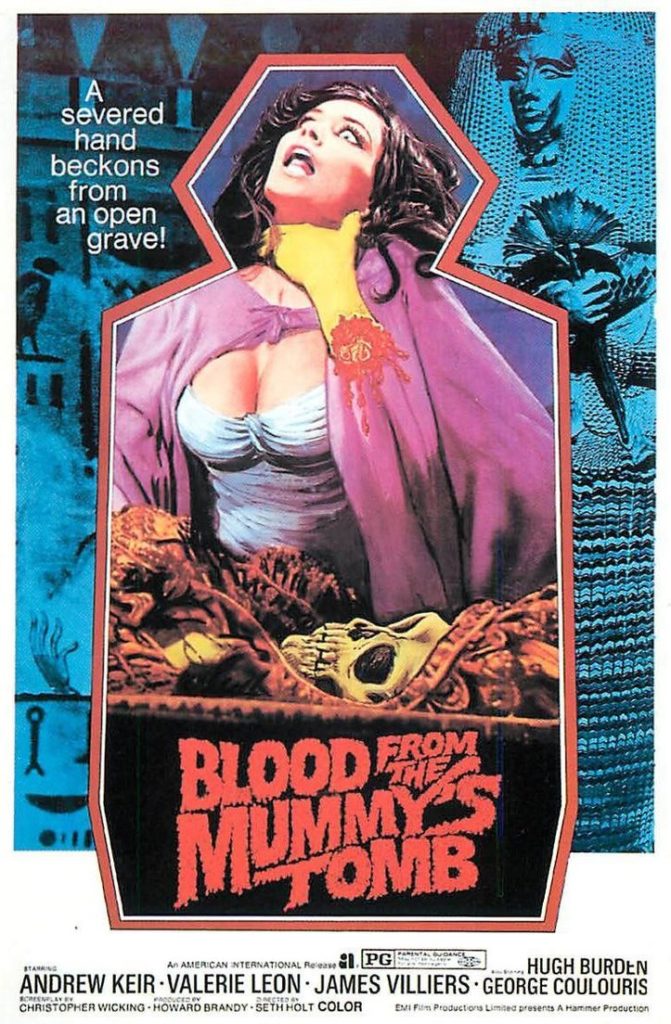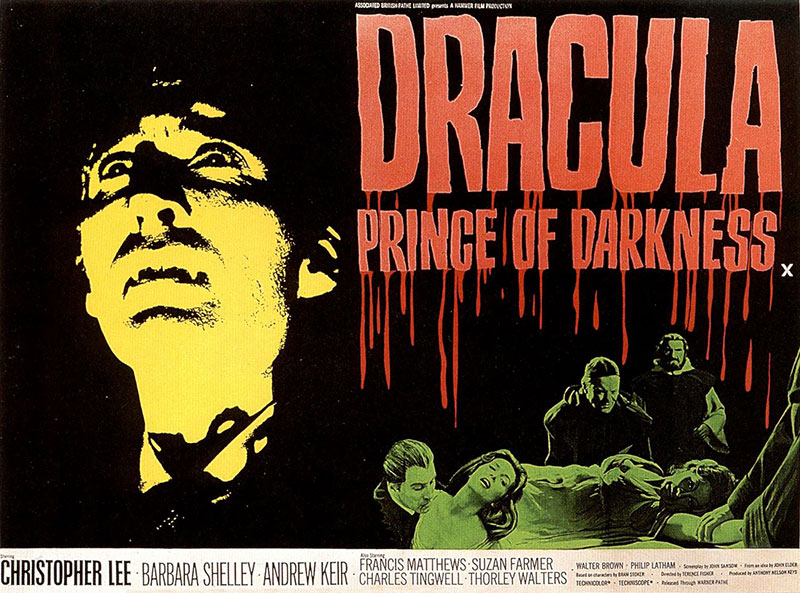What a title. Taste the Blood of Dracula. That’s a pretty good start for today’s horror film, before a single frame even goes by. From 1970, Taste the Blood of Dracula was written by Anthony Hinds, directed by Peter Sasdy, and features Christopher Lee returning to play Dracula. Continue reading “October Hammershow: Taste the Blood of Dracula”
Tag: A Very English Production
October Hammershow: The Two Faces of Dr. Jekyll
Before I began watching The Two Faces of Dr. Jekyll, I thought that the film was probably going to be analogous to one of Hammer’s Frankenstein films, only the monster and his creator never share screen time. If one were to describe this film with broad strokes, such a description is accurate, to a point. Hammer horror films are all kin to one another. They were made quickly, cheaply, and often back to back. Developing an overarching style that applies from one film to the next was an outgrowth of that. So, yes, The Two Faces of Dr. Jekyll does bear similarity to any of the Frankenstein films, as do those films to the Dracula films, et cetera, et cetera. It’s in the details where each of these films, including today’s entry, are given the opportunity to stand out. Continue reading “October Hammershow: The Two Faces of Dr. Jekyll”
October Hammershow: Blood from the Mummy’s Tomb, or, Underboob: The Movie
 Hammer, in a wise decision, jettisoned much of the tropes they had used in their previous Mummy films. For three consecutive productions, they had made basically the same film. British archaeologists discover ancient Egyptian tomb, said tomb has a curse on it, ancient Egyptian mummy resurrects and kills those who dared desecrate the tomb. It really was the same thing again and again. That was all well and good when they did it the first time, but by the last film, The Mummy’s Shroud, the plot was too familiar, and everyone involved seemed to be just going through the paces.
Hammer, in a wise decision, jettisoned much of the tropes they had used in their previous Mummy films. For three consecutive productions, they had made basically the same film. British archaeologists discover ancient Egyptian tomb, said tomb has a curse on it, ancient Egyptian mummy resurrects and kills those who dared desecrate the tomb. It really was the same thing again and again. That was all well and good when they did it the first time, but by the last film, The Mummy’s Shroud, the plot was too familiar, and everyone involved seemed to be just going through the paces.
The fourth film, Blood from the Mummy’s Tomb, stays true to only some of the core elements, going so far as to ditch the traditional bandages and rags of films past. In this film, written by Christopher Wicking, loosely adapting Bram Stoker’s novel The Jewel of Seven Stars, the mummy is the perfectly preserved corpse of Queen Tera, who died young and buxom, and thus couldn’t be wrapped in bandages, oh no.
Her tomb is discovered by the requisite British Egyptologists, but they bring the dead queen and her artifacts back to England in secret, rather than placing them in a museum or putting on a tour. That’s because, for reasons that are never adequately explained, some of the party wish to resurrect the queen, so she can rule again. Anyway, the resurrection part is kind of on the periphery, because in the meantime, Queen Tera has a doppelganger in Margaret Fuchs (Valerie Leon, who plays both Margaret and Tera), the daughter of the archaeological expedition’s leader, Julian Fuchs (Andrew Keir). She was born in England at the very moment Queen Tera’s sarcophagus was opened, revealing the scantily clad beauty within. Continue reading “October Hammershow: Blood from the Mummy’s Tomb, or, Underboob: The Movie”
October Hammershow: Frankenstein Created Woman
Baron Victor Frankenstein is back. At the end of the previous film, The Evil of Frankenstein, the series’ antihero was dispatched along with his box-headed creation. It was a scene of ultimate finality, even if there wasn’t a shot of a dead Frankenstein putting an exclamation point on his story. But death is never permanent in film should the producers wish it. I don’t just mean the death of a character, either, but the actor who plays the part. This film’s star, Peter Cushing, finds his character resurrected for further use in this film, but Cushing himself was resurrected digitally, more than twenty years after his death, to make an appearance in the latest Star Wars flick. It won’t be much longer before actors find themselves under the same threat of obsolescence as the rest of us in the workforce. But I digress… Continue reading “October Hammershow: Frankenstein Created Woman”
October Hammershow: Dracula Has Risen from the Grave
It is now the halfway point of this year’s Horrorshow, and I’m enjoying watching all these classic Hammer horror flicks. But, watching them all close together like this means I’m more aware of when they are repeating themselves compared to watching them on a normal release schedule. For example, the three Mummy flicks I’ve reviewed so far this month have basically been the same film. There is still a good film to be made from the idea, but by The Mummy’s Shroud, I’m not sure the filmmakers were trying. Today’s film, Dracula Has Risen from the Grave, suffers from some of the same sort of creative malaise that doomed The Mummy’s Shroud. Continue reading “October Hammershow: Dracula Has Risen from the Grave”
October Hammershow: Quatermass and the Pit, aka Five Million Years to Earth
It’s a new era for Quatermass. Because of Hammer’s success with its horror films, the third Quatermass film had an increased budget compared to the previous entries. Whereas The Quatermass Xperiment had to get by on a mere £42,000, Quatermass and the Pit had an astronomical £275,000 with which to work its magic. Gone is the inexpensive black and white film stock, replaced with color. It’s still an inexpensive stock, but COLOR. Continue reading “October Hammershow: Quatermass and the Pit, aka Five Million Years to Earth”
October Hammershow: The Mummy’s Shroud
Hammer must have been out of ideas by the time they made The Mummy’s Shroud in 1967. At least, that’s what it feels like. There is not a single moment of tension or surprise in writer/director John Gillings’ film. But that isn’t to say The Mummy’s Shroud is a bad film. It’s not. It’s cheap and fairly stupid, and it doesn’t bother to challenge any of the tropes audiences had come to expect with a mummy film, but it has its charms. Continue reading “October Hammershow: The Mummy’s Shroud”
October Hammershow: The Evil of Frankenstein
Hammer had a good thing going with its Frankenstein films. Because Universal Pictures were being stingy with their trademarks, Hammer had been forced to deviate from Universal’s Frankenstein flicks in setting and characterizations. This freed Hammer’s creative teams to come up with some pretty imaginative stuff, and also allowed the films’ star, Peter Cushing, to make the character of Victor Frankenstein his own. But, Hammer and Universal ironed out their differences in the form of a distribution deal, and Hammer wasted no time bringing their Frankenstein into line with Universal’s. That’s too bad. Continue reading “October Hammershow: The Evil of Frankenstein”
October Hammershow: Dracula: Prince of Darkness
 After eight years, Dracula, the actual Dracula and not some misdirection with the title, is back in Hammer’s 1966 film Dracula: Prince of Darkness. 1958’s Dracula (Horror of Dracula in the US) is among the most well-known and revered of Hammer’s horror catalogue. It was also a moneymaker. So, for a company that was in the business to make a buck I find it surprising that it took Hammer eight years to put a sequel together. Part of the problem may have been Dracula’s recalcitrant star, Christopher Lee. He led a most interesting life, mingling with true giants on a regular basis. Sometimes it feels like he did all this cheap horror to pay the rent, but his heart was never really in it. Like many stars he often failed to do the decent thing and keep his mouth shut about a project after filming wrapped. Continue reading “October Hammershow: Dracula: Prince of Darkness”
After eight years, Dracula, the actual Dracula and not some misdirection with the title, is back in Hammer’s 1966 film Dracula: Prince of Darkness. 1958’s Dracula (Horror of Dracula in the US) is among the most well-known and revered of Hammer’s horror catalogue. It was also a moneymaker. So, for a company that was in the business to make a buck I find it surprising that it took Hammer eight years to put a sequel together. Part of the problem may have been Dracula’s recalcitrant star, Christopher Lee. He led a most interesting life, mingling with true giants on a regular basis. Sometimes it feels like he did all this cheap horror to pay the rent, but his heart was never really in it. Like many stars he often failed to do the decent thing and keep his mouth shut about a project after filming wrapped. Continue reading “October Hammershow: Dracula: Prince of Darkness”
October Hammershow: The Hound of the Baskervilles (1959)
Hammer Film Productions may have found its greatest success with its gothic horror films, but they still kept up work on other productions. The Hound of the Baskervilles is, of course, an adaptation of the famous Sherlock Holmes novel by Arthur Conan Doyle. But calling it a departure from Hammer’s horror catalogue is not entirely accurate. For one thing, the people involved in the production are among the most recognizable names from the studio. Terence Fisher directed, Anthony Hinds produced, and Peter Cushing and Christopher Lee starred. In addition, while Hound is a mystery, there are loads of gothic horror elements present in the source material, making it the most adaptable of the Sherlock Holmes stories to Hammer’s style of horror. Continue reading “October Hammershow: The Hound of the Baskervilles (1959)”
